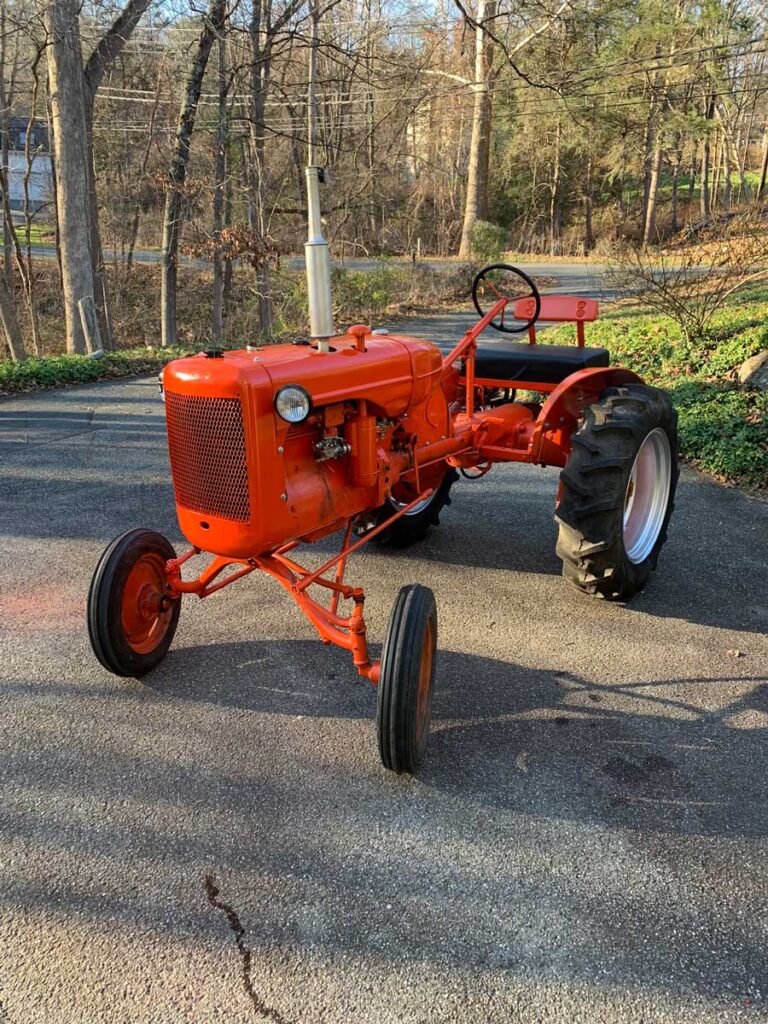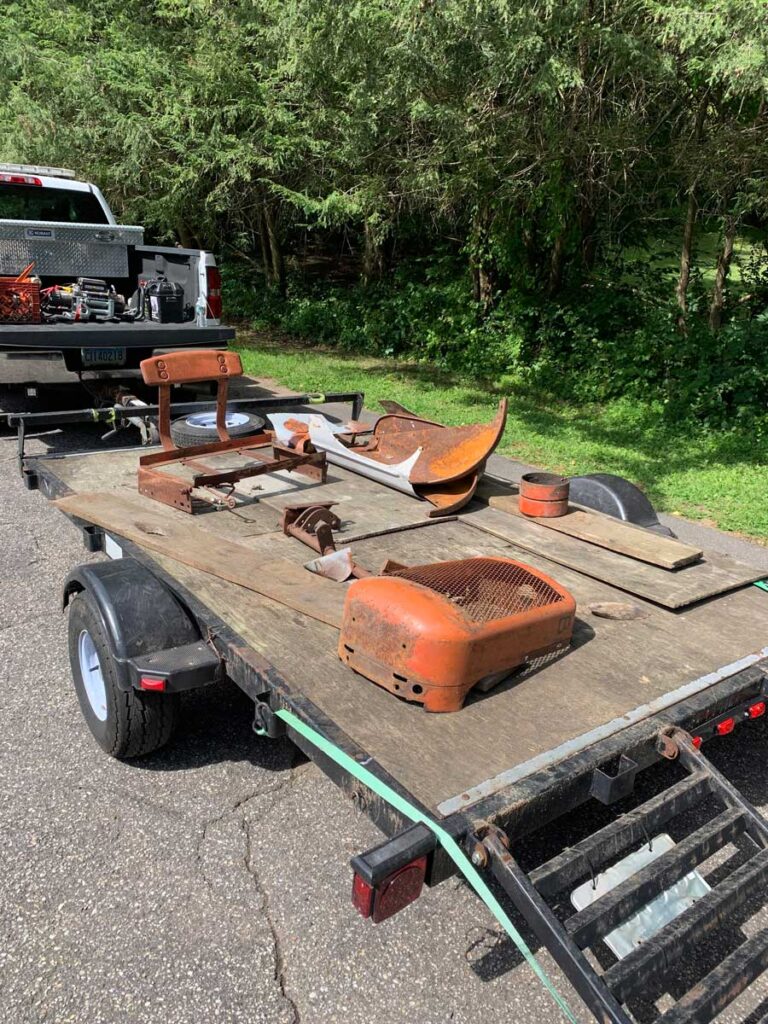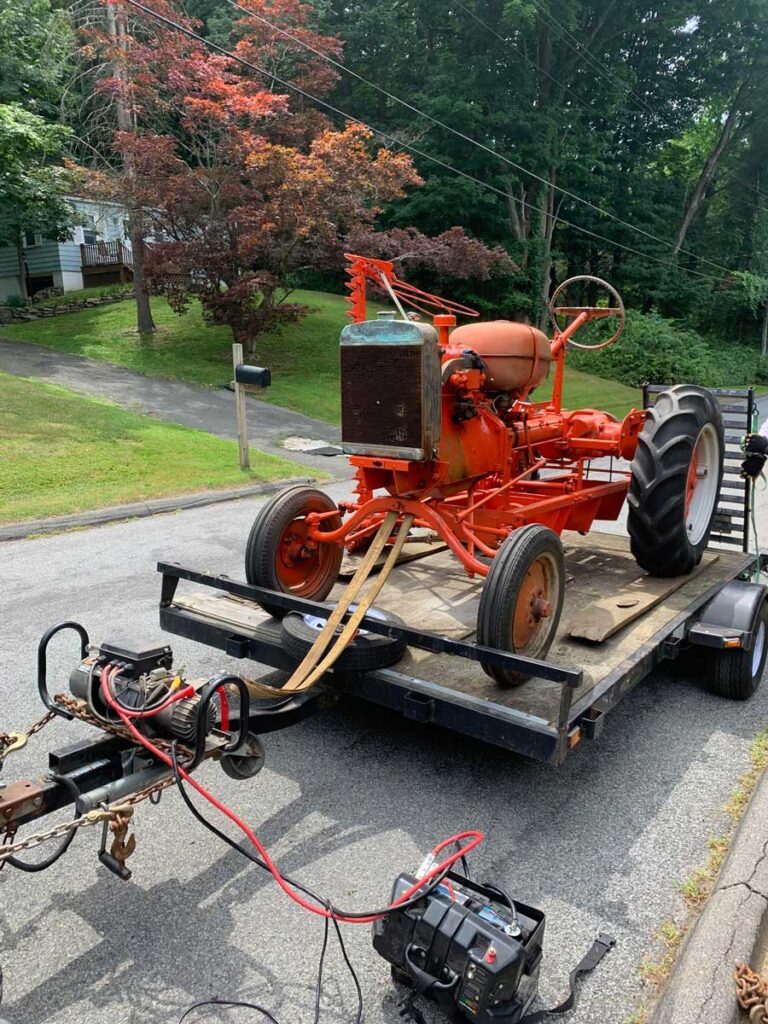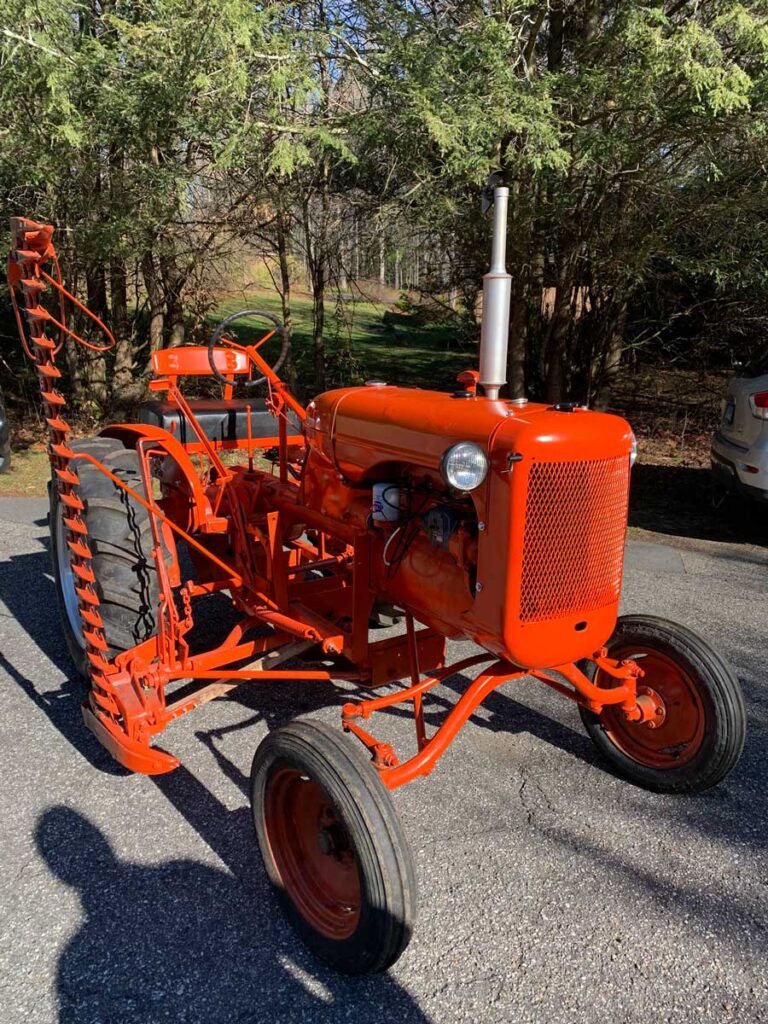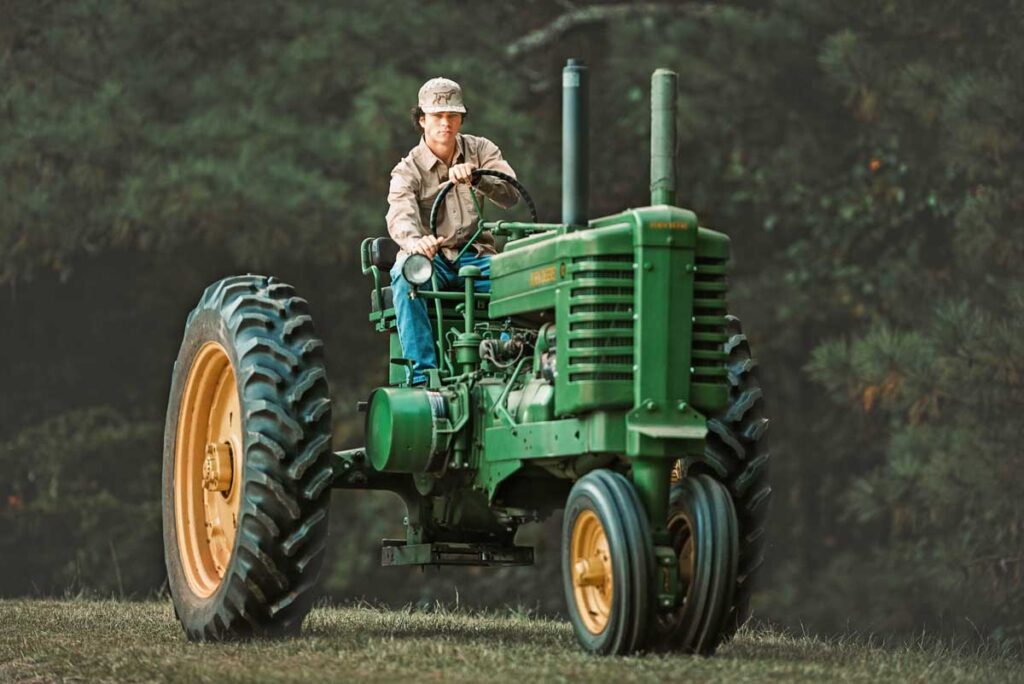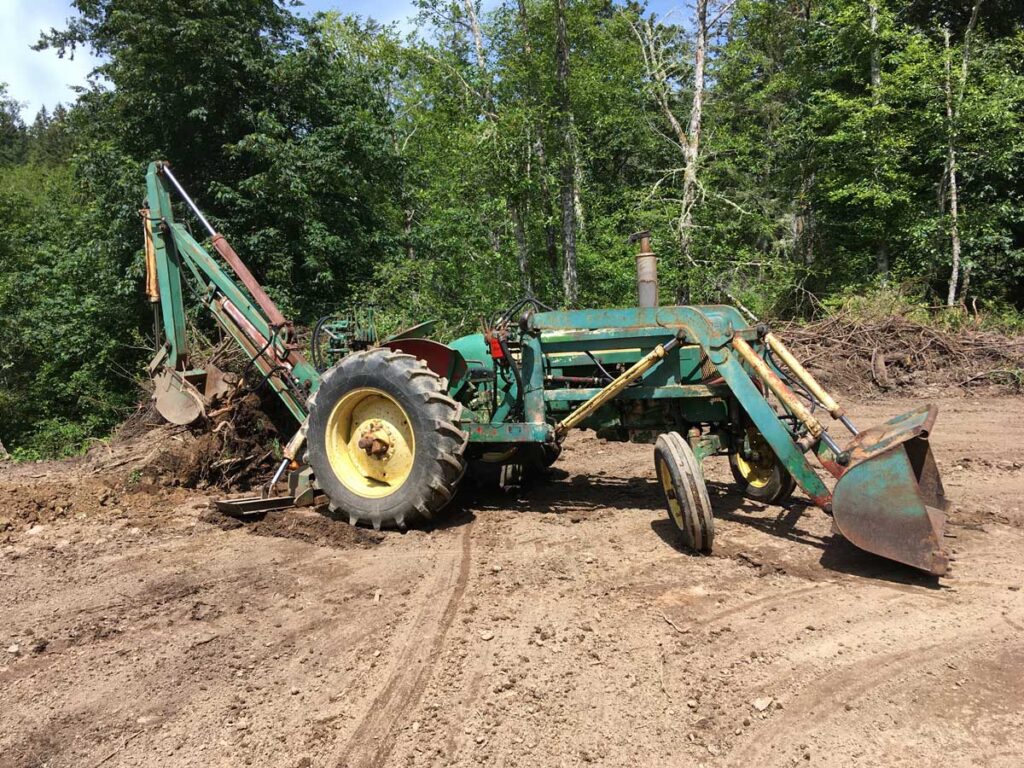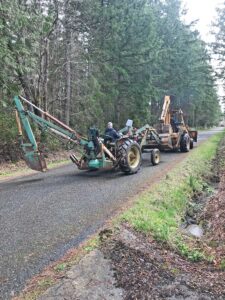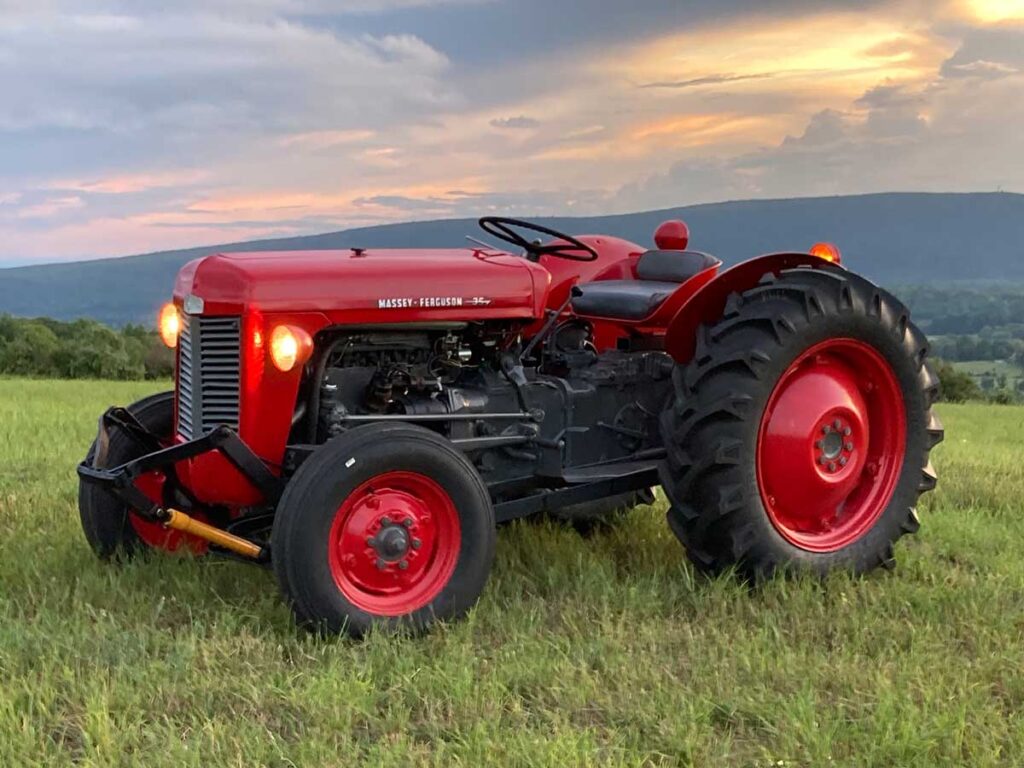
1959 Massey-Harris-Ferguson 35 tractor. A few years ago, I was offered to salvage what I wanted from an old barn. The MF35 was parked alongside the barn engulfed by thorns, bushes and saplings growing through and around the tractor. The tractor had been sitting there for quite some time, of course. The tires were all dry rotted and at a glance you would’ve bet that any piece of this tractor that used to move was most likely seized up.
I am not mechanically literate but my good friend Bill Bart is, Bill owned a body shop and has worked on cars his whole life. Bill took a look at it and thought that the MF35 could be saved. That is all he had to say. The problems consisted of a blown head gasket, seized bearings, bad clutch (that took eight different attempts to replace), dry rotted tires and belts, fluids and battery were all fixed or replaced. At one point, while the tractor was partially apart, Bill mentioned about painting the tractor. I liked the idea so we torched and cut multiple bolts to disassemble the remaining parts to now add the painting job to the timeline. Bill painted most of the MF35 as I sanded, wire brushed and power washed the rotting rims in preparation. Once the MF35 was painted, final touches like the decals, lights and brand-new tires were ordered and replaced.
After completing this project, this tractor has become a part of the family. As with anything in life, the MF35 journey included fun times and times of disgruntlement. When I look at the tractor, I feel empowered and thankful for friends. A special thank you to Mark and John Boadle; John is the walking encyclopedia in the subject of farm tractors. Lastly, a big thank you to Bill Bart that thought we could save this MF35, and we did.
Jim Boyles
Pine Plains, New York
Tractor Photo Contest Winner
